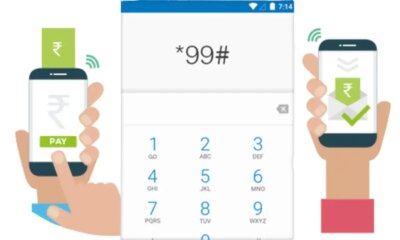Tech
Companies Tap Nfts, Blockchains To Manage Real-world Assets

[ad_1]
The process entails converting these records into NFTs, and entering them into a blockchain-based ledger.
Bru Finance is among a growing number of firms making real-world use of NFTs, adding to the immense focus on the trading aspect of NFTs through avenues such as digital art and music.
“Our NFT is not a picture for proof (PFP) NFT; it is rather an NFT representing commodities like wheat, rice, etc,” said Ashish Anand, founder and chief executive of Bru Finance. While it works with farmers now, the company aims to tokenize other real-world assets in future too and provide loans on them.
According to Anand, creating NFTs solves the problem of fake and duplicate receipts and other issues lenders face. It also provides the company visibility into the life cycle of the commodity it is lending against since any change in ownership will also be recorded on the blockchain. It also leads to instant receivables such as finance, liquid market access, and a global reach at a faster pace than via paper-based systems.
NFTs are digital tokens with unique identification codes, and can be assigned to any digital asset to identify its owner. Since it’s stored on a blockchain, the code cannot be tampered with, which makes replicating or copying difficult. Invoices and receipts for such loans are often shared digitally over emails. However, those receipts can be tampered using computer software, to create new copies. Attaching an NFT, however, means that even though the original document can be tampered with, its digital record on the blockchain remains as proof of the change.
Praphul Chandra, founder, and chief scientist at blockchain firm Koinearth pointed out that NFTs are essentially a digital certificate with the advantage of blockchain technology that makes the issuer and the owner globally identifiable. Chandra has built a platform called ngageN, which allows brands to sell NFTs but without using crypto-based transactions.
“There are digital certificates that have a connection with physical assets and there are certificates that have a connection to digital assets. Blockchain firms have been working on this for years now. It is just that now they are called NFTs,” he said.
Chandra also attributed this move towards maturing of standards. “Going forward, you will see certificates, which have counterparts in the physical world whether it is an invoice, car, or land. All that will be eventually converted into NFTs,” he said.
Further, while Bru Finance is using NFTs as proof of a loan, a startup called Deefy is treating NFTs as an asset altogether. It plans to start lending money to users against their NFTs.
Amogh Tiwari, founder of Deefy, said the company is offering instant loans on NFT collections that people have. It provides a score based on the floor price, sale history, number of holders, and price fluctuations of an NFT. Tiwari said the company has already received requests for such loans, and plans to tie-up with banks and other lenders to offer such services. Pratik Shah, financial services consulting leader at EY, warned however, that the fact that NFTs aren’t always tied to real-world assets may be troublesome in future. “The value of an NFT artwork can be valued at half a million dollars and it may change drastically within a few weeks,” he noted. Shah, however, noted that a blockchain platform can remember that an NFT is under escrow till the loan is paid off. This can minimize the risk of loss of collateral.
To be sure, this isn’t the first time that blockchain-based technologies have been put to use for record keeping in the real world. The Andhra Pradesh government had announced plans to build blockchain-based land records back in 2018, which was eventually done using a platform from Hyderabad-based blockchain firm Zebi.
Another example is Aqilliz, which sold a stake to Bharti Airtel Ltd this February. According to Gowthaman Ragothaman, chief executive officer, Aqilliz, the company has created a way to help firms run advertisements online even after big tech firms like Google and Apple stop allowing companies to track users across the web.
Big tech firms have already started blocking cookies, which allow companies to track users outside of their own platforms. In their absence, Aqilliz’s blockchain platform can help a telco like Airtel record user interactions and use this for targeted advertising online. It’s not the same as maintaining a record through NFTs, but it uses blockchains to provide an alternative to cookie-based tracking.
Crypto trading in India has taken a downturn this month, as the government’s new rules for taxing the industry came into force. During the Union Budget this year, finance minister Nirmala Sitharaman announced that the government would levy a 30% tax on capital gains from crypto and NFT trades.
According to data from crypto research firm CREBACO, published last week, volumes on Indian exchanges dropped significantly since the new rules were enforced. The report noted that trading volumes on WazirX plunged 72% since 1 April, while those on ZebPay, CoinDCX and BitBNS fell 59%, 52% and 41%, respectively.
With inputs from Prasid Banerjee.
Download
the App to get 14 days of unlimited access to Mint Premium absolutely free!
[ad_2]
Source link














